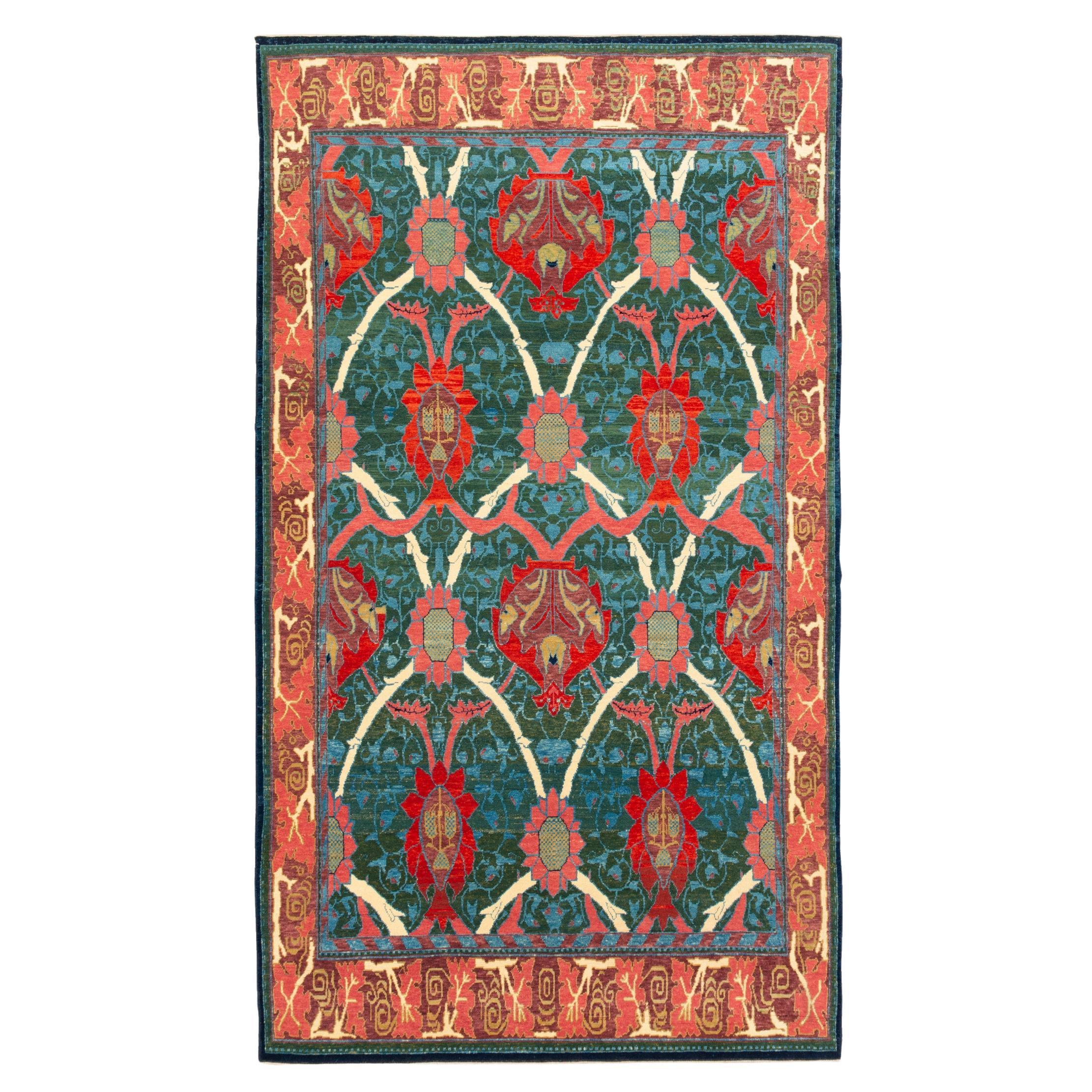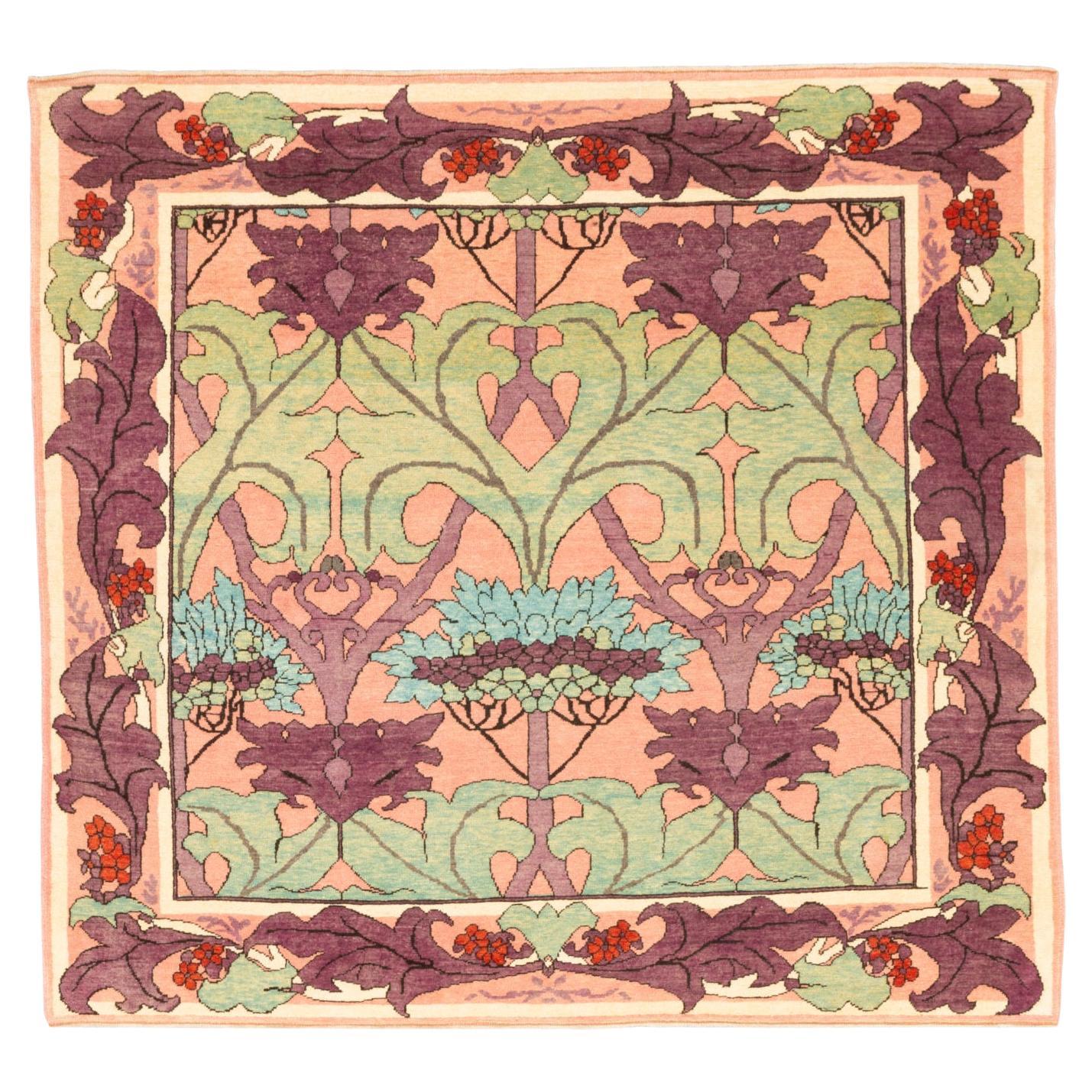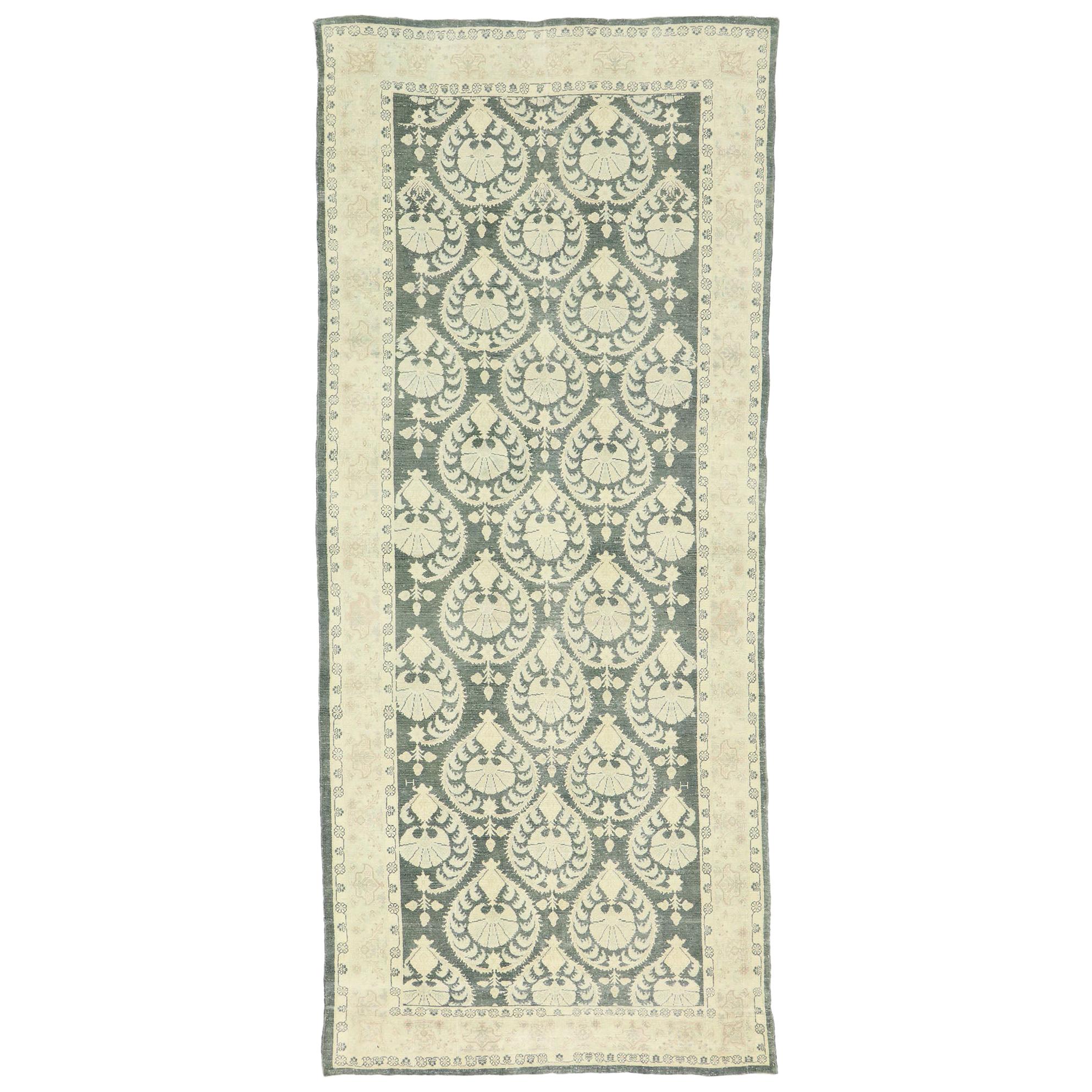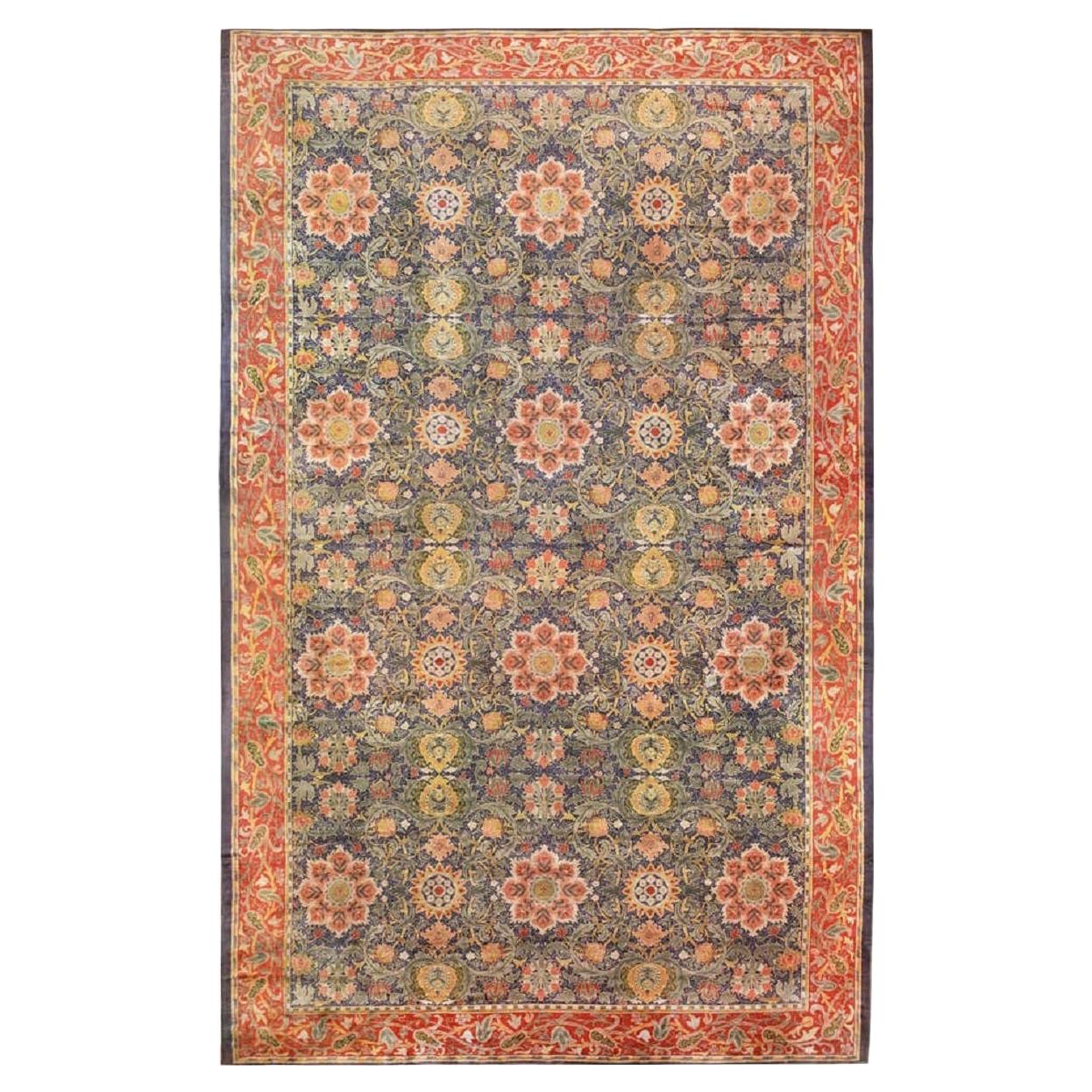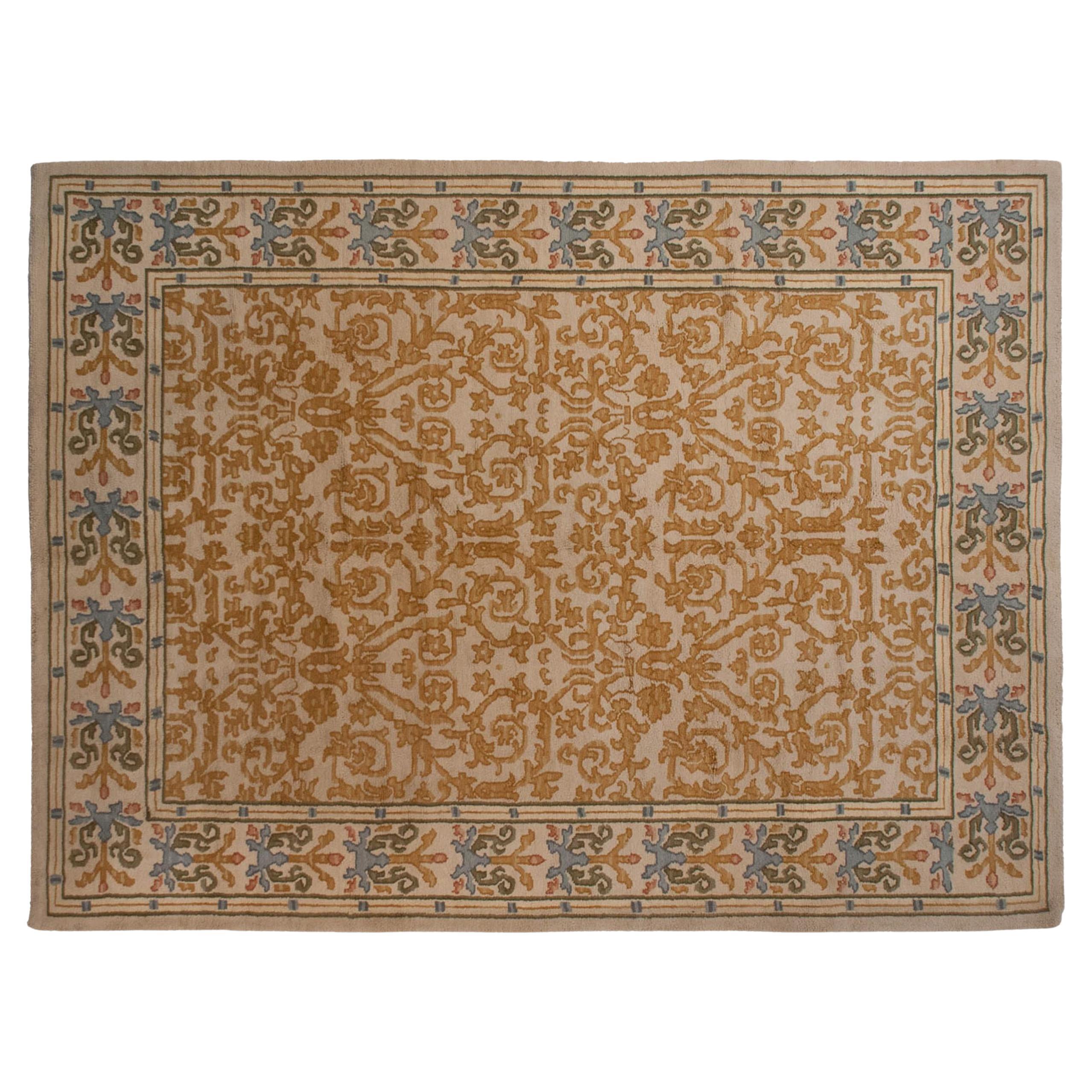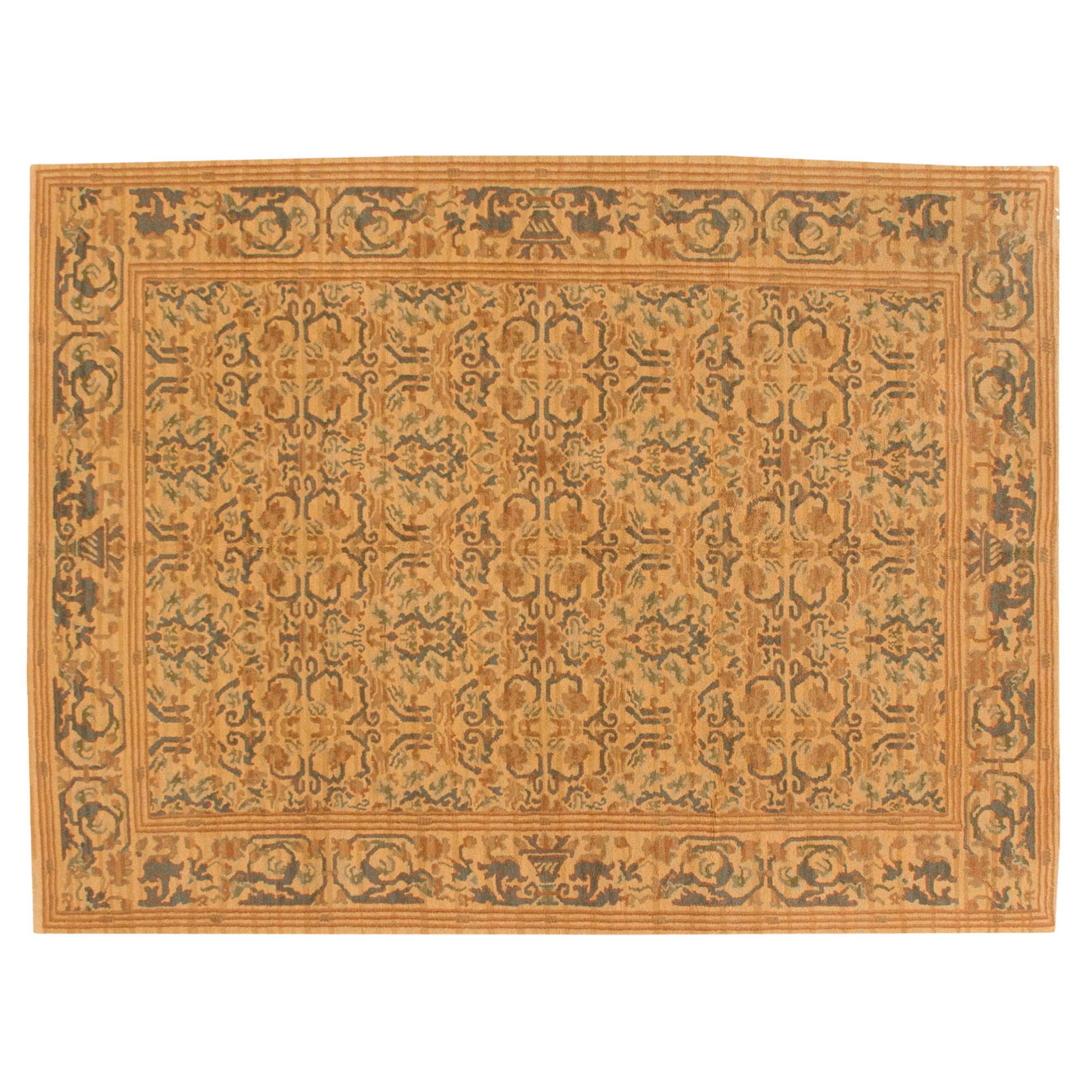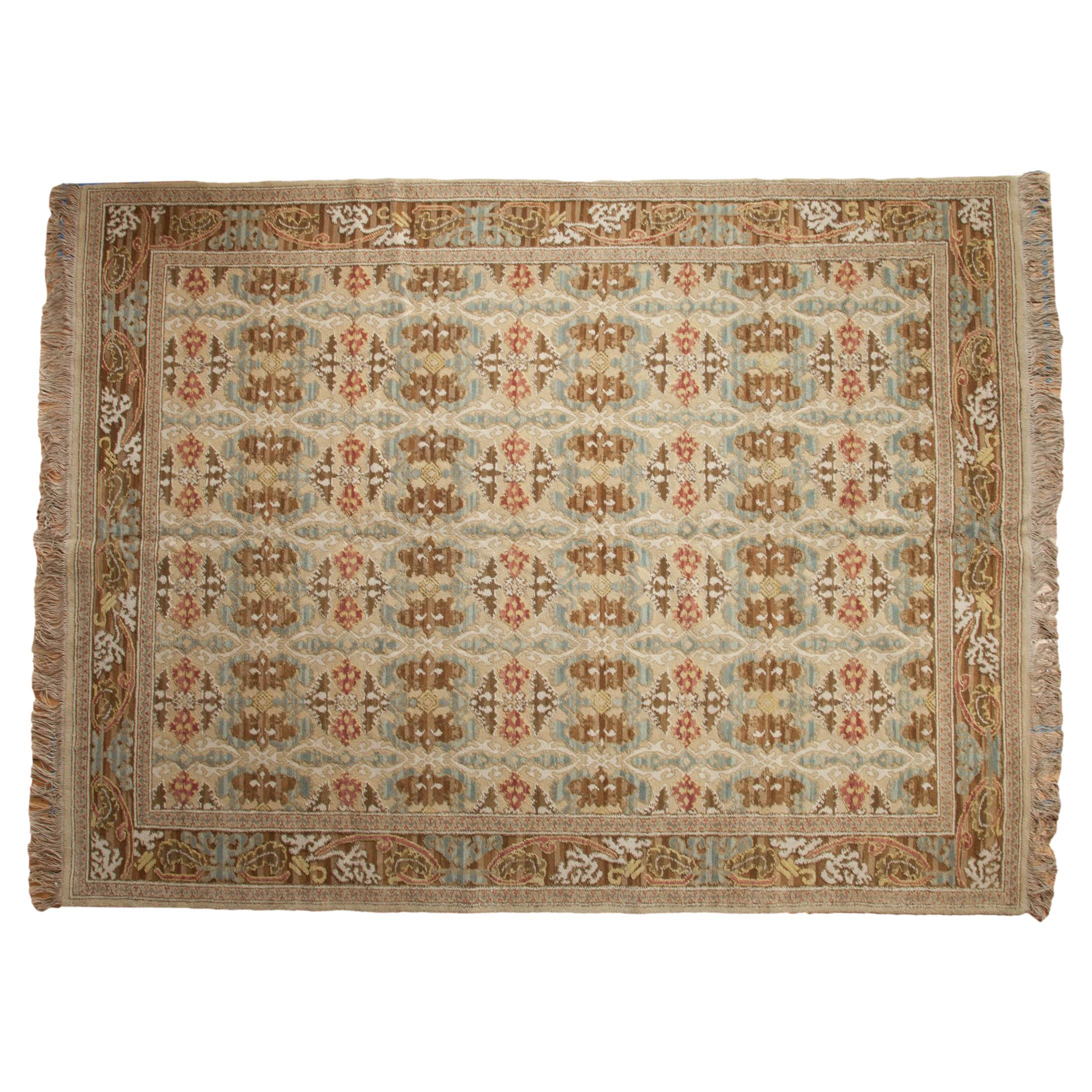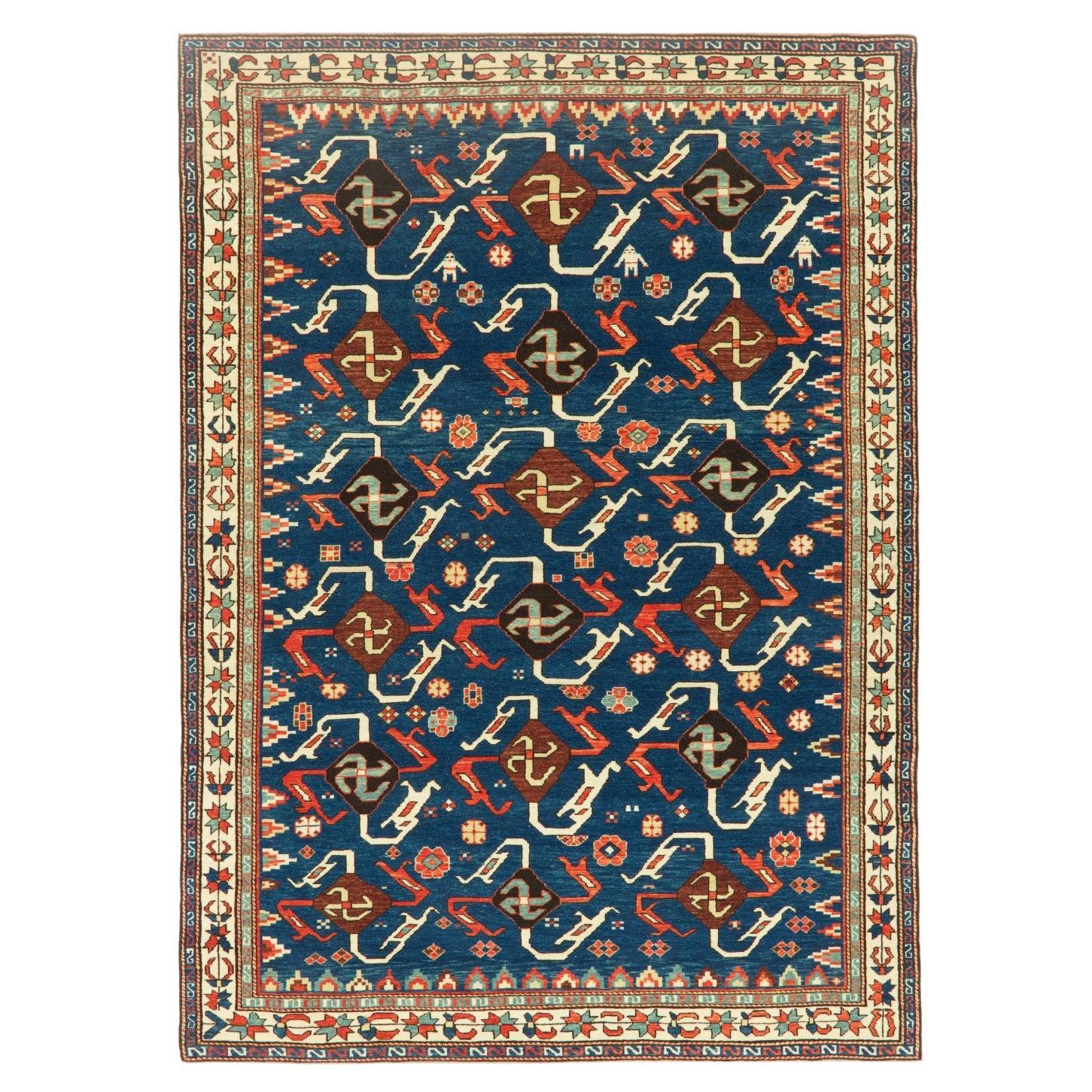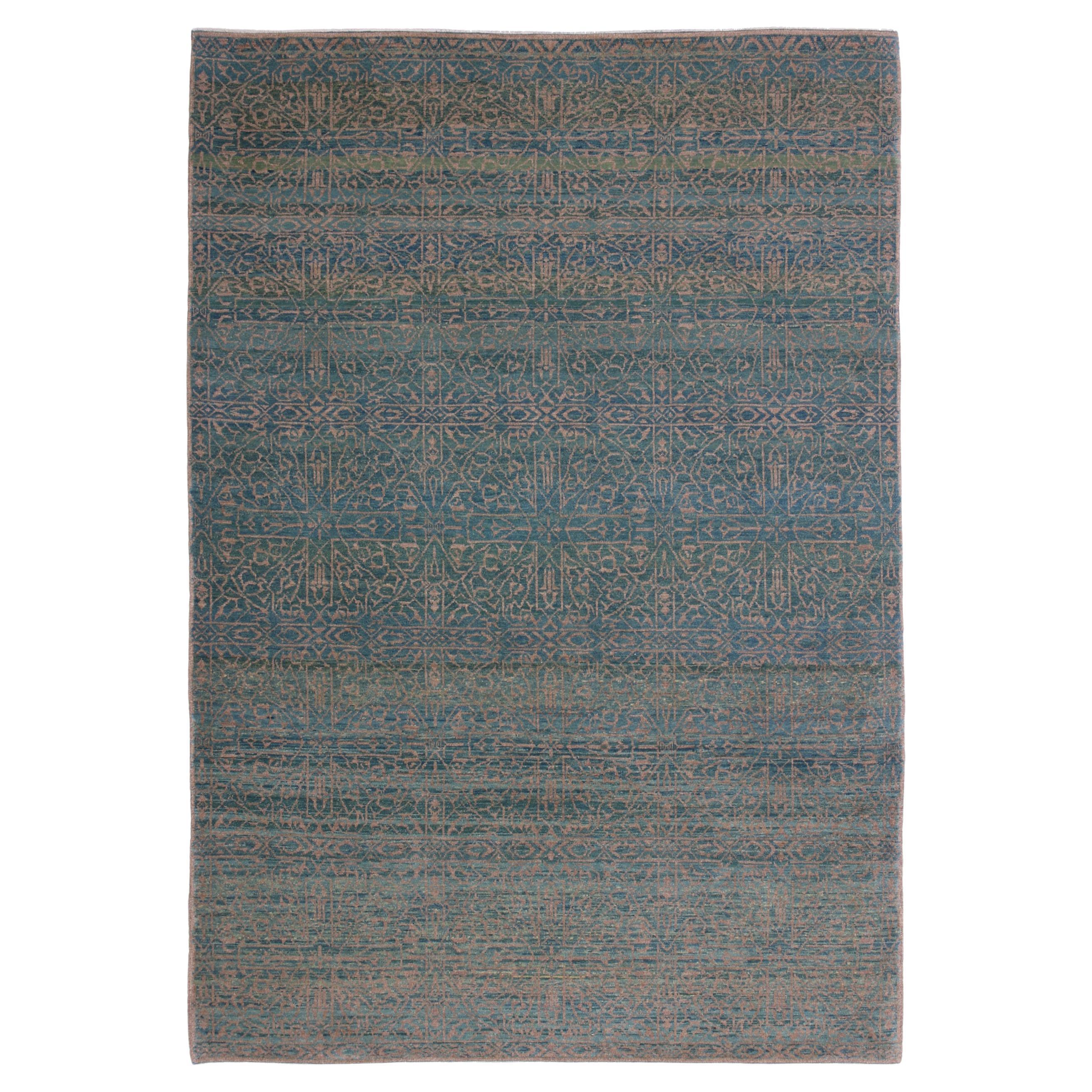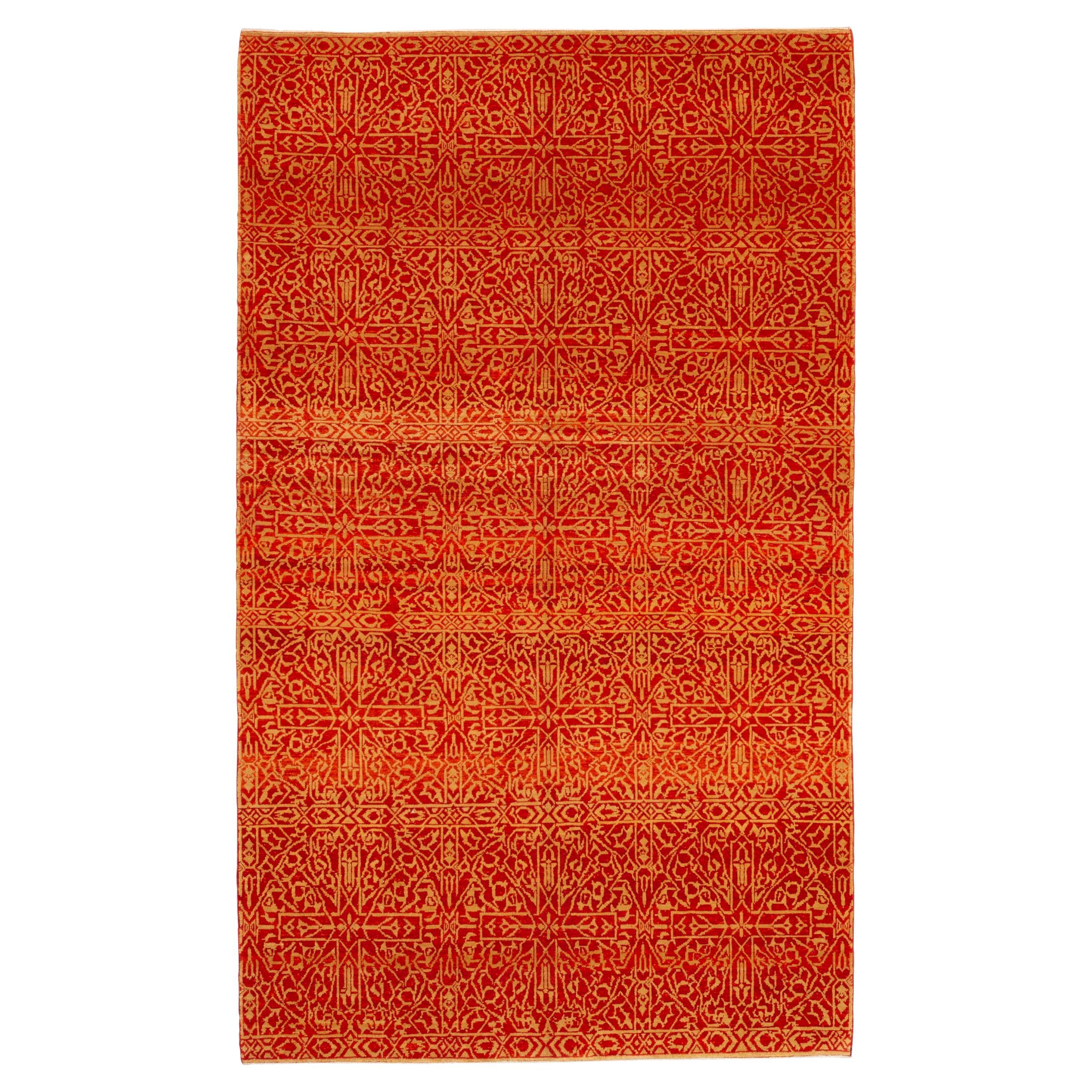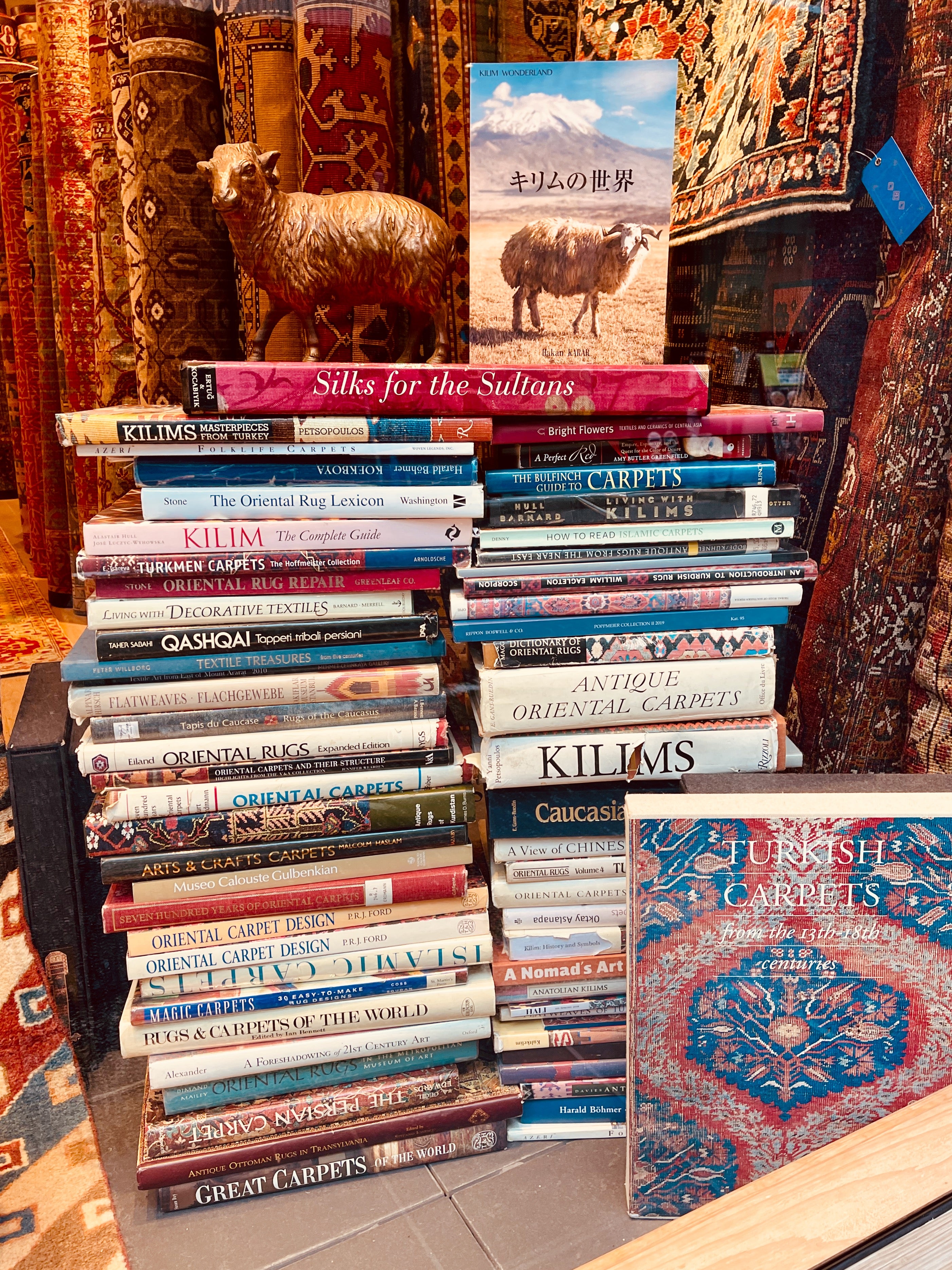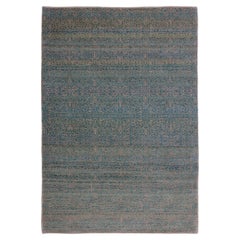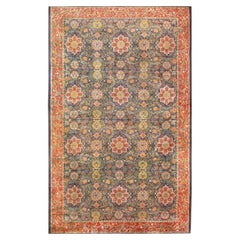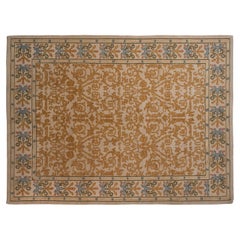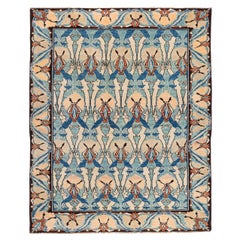
Ararat Rugs William Morris Style Carpet Arts & Crafts Design Natural Dyed
View Similar Items
Want more images or videos?
Request additional images or videos from the seller
1 of 5
Ararat Rugs William Morris Style Carpet Arts & Crafts Design Natural Dyed
About the Item
- Creator:Ararat Rugs (Manufacturer)
- Dimensions:Width: 61.03 in (155 cm)Length: 74.02 in (188 cm)
- Style:Arts and Crafts (In the Style Of)
- Materials and Techniques:
- Place of Origin:
- Period:
- Date of Manufacture:2021
- Production Type:New & Custom(One of a Kind)
- Estimated Production Time:23-24 weeks
- Condition:
- Seller Location:Tokyo, JP
- Reference Number:1stDibs: LU8206233063212
ARARAT RUGS
We know and believe that the geography we come from, our past, and our lifestyle are the most important bond between us to carry the oriental carpet art and culture to the next generations along with our core values in our ongoing growth journey.
We are aware that the way to achieve this goal and carry this priceless art and culture to the future depends on a lot of work with all our people every day while adhering to our core values.
For us, art is meaningful in the sense that it brings together various cultures around the world. It is an honor for us that oriental carpet art and culture have been instrumental in this for centuries and that we are a part of this business.
We are tirelessly keeping an eye on auction house information around the world about carpets. New York's Metropolitan, London's Victoria & Albert Museums, and other famous art museums, as well as small specialized museums that house private collections, and books about oriental carpets to collect information on outstanding carpet designs and patterns from around the world. It's our Self-improving and Self-developing culture.
As Turkish Culture of Hospitality, the Kurdish Culture of Generosity, and as Japanese Culture of Business Punctuality; are the most important values that this multicultural background has taught and bequeathed to us. It is essential and valuable for us that you feel this feeling not only by looking at our oriental carpets but from the moment you contact us.
About the Seller
5.0
Vetted Seller
These experienced sellers undergo a comprehensive evaluation by our team of in-house experts.
Established in 1970
1stDibs seller since 2023
13 sales on 1stDibs
Typical response time: 1 hour
More From This SellerView All
- Ararat Rugs Holland Park William Morris Carpet, Arts and Crafts, Natural DyedBy Ararat RugsLocated in Tokyo, JPThe source of carpet comes from the book Arts & Crafts Carpets, by Malcolm Haslam, and David Black, 1991, fig.49. This Hammersmith carpet was designed by William Morris in 1882, in the United Kingdom. In 1887 English artist and bookbinder T.J. Cobden Sanderson, suggested that a new group be named the “Arts and Crafts Exhibition Society” As a result, he was the first to use the term “Art and Crafts” and also is credited with naming this new emerging movement. The Arts & Crafts movement was inspired by the degradation of product standards that resulted from the factory production age. The rise of machinery in manufacturing caused a noticeable decline in uniqueness and crafts. These anti-Industrial reformers promoted economic advancement and social change. They wanted to eliminate poor quality and “artificial” items from 19th century British society. They saw a plethora of uninteresting items on display at the Great Exhibition of 1851 and became inspired to launch a Campaign for originality and uniqueness. William Morris was an English designer, as well as an uplifting social activist and writer. Morris is credited with sparking the rebirth of textile arts and traditional means of production. In 1861, Morris and a small group of designers opened an incredibly fashionable design company that grew to be largely successful. Morris left behind works in many different mediums such as textiles, books, furniture, stained glass, and area rugs. But in the end, he is most remembered for the magnificent wallpapers that he designed. He got much of his inspiration from the natural world. Through his interior decor pieces, Morris set out to convert rooms or spaces into meadows with beautiful trees meandering, vines, and plants. This concept of taking something Industrial and man-made, and converting it into something natural is what William Morris meant when he once said: “-any decoration is futile… when it does not remind you of something beyond itself.” Morris was a huge commercial success and his works are some of the most sought-after pieces in the world of design and decor. He is also credited with almost single-handedly reviving the British textile arts as well as their methods of production. Morris was also severely critical of machine-made goods, exclaiming, “Today almost all wares that are made by civilized man are shabbily and pretentiously ugly.” Houses were filled “with tons and tons of unutterable rubbish,” which, he suggested, should be heaped onto a gigantic bonfire! “As a condition of life, production by machinery is altogether evil.” He masterminded one of the most well-known styles of Arts & Crafts, recognizable by its twisting and arching patterns and simple, elegant floral design prints. Although Morris believed that Persian carpets were the greatest ever made, he adopted the coarser Turkish (Ghiordes) knot for his hand knotted carpet manufacture. They were woven at a thickness of 25 knots to the square inch at that time. Morris & Co.’s rugs are reminiscent of Persian garden design carpets in that they are smartly styled depictions of English gardens. Donegal also started producing highly desirable Irish rugs in the late 19th century. The Donegal rugs were predominantly created by English architects C.F.A. Voysey and Gavin Morton. The handcrafted Voysey rugs are typically woven in England, Scotland, and Ireland. Voysey had a knack for using contrasting shapes to decorate flat monochromatic spaces. Dark outlines added a flair of drama to his signature pattern and Celtic rug...Category
21st Century and Contemporary Turkish Arts and Crafts Western European Rugs
MaterialsWool, Natural Fiber, Organic Material
- Ararat Rugs the Fintona William Morris Carpet, Arts and Crafts, Natural Dyed RugBy Ararat RugsLocated in Tokyo, JPThe source of the carpet comes from the book Arts & Crafts Carpets, by Malcolm Haslam, and David Black, 1991, fig.55. This Donegal carpet was possibly designed by the Silver Studio for Liberty’s c.1902, United Kingdom. In 1887 English artist and bookbinder T.J. Cobden Sanderson, suggested that a new group be named the “Arts and Crafts Exhibition Society” As a result, he was the first to use the term “Art and Crafts” and also is credited with naming this new emerging movement. The Arts & Crafts movement was inspired by the degradation of product standards that resulted from the factory production age. The rise of machinery in manufacturing caused a noticeable decline in uniqueness and crafts. These anti-industrial reformers promoted economic advancement and social change. They wanted to eliminate poor quality and “artificial” items from 19th-century British society. They saw a plethora of uninteresting items on display at the Great Exhibition of 1851 and became inspired to launch a campaign for originality and uniqueness. William Morris was an English designer, as well as an uplifting social activist and writer. Morris is credited with sparking the rebirth of textile arts and traditional means of production. In 1861, Morris and a small group of designers opened an incredibly fashionable design company that grew to be largely successful. Morris left behind works in many different mediums such as textiles, books, furniture, stained glass, and area rugs. But in the end, he is most remembered for the magnificent wallpapers that he designed. He got much of his inspiration from the natural world. Through his interior decor pieces, Morris set out to convert rooms or spaces into meadows with beautiful trees meandering, vines, and plants. This concept of taking something industrial and man-made, and converting it into something natural is what William Morris meant when he once said: “-any decoration is futile… when it does not remind you of something beyond itself.” Morris was a huge commercial success and his works are some of the most sought-after pieces in the world of design and decor. He is also credited with almost single-handedly reviving the British textile arts as well as their methods of production. Morris was also severely critical of machine-made goods, exclaiming, “Today almost all wares that are made by civilized man are shabbily and pretentiously ugly.” Houses were filled “with tons and tons of unutterable rubbish,” which, he suggested, should be heaped onto a gigantic bonfire! “As a condition of life, production by machinery is altogether evil.” He masterminded one of the most well-known styles of Arts & Crafts, recognizable by its twisting and arching patterns and simple, elegant floral design prints. Although Morris believed that Persian carpets were the greatest ever made, he adopted the coarser Turkish (Ghiordes) knot for his own hand-knotted carpet manufacture. They were woven at a thickness of 25 knots to the square inch at that time. Morris & Co.’s rugs are reminiscent of Persian garden design carpets in that they are smartly styled depictions of English gardens. Donegal also started producing highly desirable Irish rugs in the late 19th century. The Donegal rugs were predominantly created by English architects C.F.A. Voysey and Gavin Morton. The hand-crafted Voysey rugs are typically woven in England, Scotland, and Ireland. Voysey had a knack for using contrasting shapes to decorate flat monochromatic spaces. Dark outlines added a flair of drama to his signature pattern and Celtic rug...Category
21st Century and Contemporary Turkish Arts and Crafts Western European Rugs
MaterialsWool, Organic Material, Natural Fiber
- Ararat Rugs Modern Rug with Mamluk Geometric Design, Natural Dyed CarpetBy Ararat RugsLocated in Tokyo, JPThis rug has an interpreted design composed of a geometric lattice pattern taken from a part of the Mamluk rug, filling the field elegantly, has the impression that it is only part of a larger scheme designed 15th-century rug from the Mamluk era, Cairo region, Eygpt. Mamluk carpets originated in a physical environment that lacked the combination of abundant marginal grazing land and a temperate climate with cool winters that were common to most carpet-weaving areas in the Islamic world. While related to a broader tradition of Turkish weaving centered in Anatolia, far to the north, the designs of these carpets include atypical elements, such as stylized papyrus plants, that are deeply rooted in Egyptian tradition. Their unusual composition and layout probably represent an attempt to develop a distinctive product that could in effect establish a “Mamluk brand” in the lucrative European export market. The uncharacteristic color scheme—devoid of the undyed white pile and employing a limited range of three or five hues in much the same value—also suggests a conscious attempt to create a particular stylistic identity. Also virtually unique in the world of Islamic carpets is the S-spun wool. It has been argued that the tradition of clockwise wool spinning originated in Egypt because of the earlier Egyptian tradition of spinning flax into linen thread. Details of the plant’s botanical structure make it impossible to spin flax fiber in the more common counterclockwise direction utilized throughout the Middle East for wool and cotton. Mamluk carpets with the color combinations seen in the Simonetti are now generally accepted as part of an earlier tradition that has many links to the weaving of Anatolia, Iran, and Syria. The “three-color” Mamluk carpets, well represented in the Metropolitan’s collection, represent a later development that continued well after the Ottoman conquest of Egypt in 1517. Many such carpets may have been produced well into the seventeenth century, and possibly even later. (Walter B. Denny in [Ekhtiar, Soucek, Canby, and Haidar 2011]). The design of the rug is interpreted by our designers from our Mamlouk-type rugs collection and soft colors are used for this rug. Color summary: 2 colors of total Bamboo Beige 99 (only specially washed) Feldgrau 414 (Chamomile – indigo) Group: Islamic Rugs...Category
21st Century and Contemporary Turkish Revival Turkish Rugs
MaterialsWool, Natural Fiber, Organic Material
- Ararat Rugs Swastika Design Rug, Antique Caucasus Revival Carpet, Natural DyedBy Ararat RugsLocated in Tokyo, JPThe source of rug comes from the book Orient Star – A Carpet Collection, E. Heinrich Kirchheim, Hali Publications Ltd, 1993 nr.17. This is a remarkable and...Category
21st Century and Contemporary Turkish Revival Caucasian Rugs
MaterialsWool, Organic Material, Natural Fiber
- Ararat Rugs Modern Rug with Mamluk Geometric Design, Natural Dyed CarpetBy Ararat RugsLocated in Tokyo, JPThis rug has an interpreted design composed of a geometric lattice pattern taken from a part of the Mamluk rug, filling the field elegantly, has the impression that it is only part of a larger scheme designed 15th-century rug from the Mamluk era, Cairo region, Eygpt. Mamluk carpets originated in a physical environment that lacked the combination of abundant marginal grazing land and a temperate climate with cool winters that were common to most carpet-weaving areas in the Islamic world. While related to a broader tradition of Turkish weaving centered in Anatolia, far to the north, the designs of these carpets include atypical elements, such as stylized papyrus plants, that are deeply rooted in Egyptian tradition. Their unusual composition and layout probably represent an attempt to develop a distinctive product that could in effect establish a “Mamluk brand” in the lucrative European export market. The uncharacteristic color scheme—devoid of the undyed white pile and employing a limited range of three or five hues in much the same value—also suggests a conscious attempt to create a particular stylistic identity. Also virtually unique in the world of Islamic carpets is the S-spun wool. It has been argued that the tradition of clockwise wool spinning originated in Egypt because of the earlier Egyptian tradition of spinning flax into linen thread. Details of the plant’s botanical structure make it impossible to spin flax fiber in the more common counterclockwise direction utilized throughout the Middle East for wool and cotton. Mamluk carpets with the color combinations seen in the Simonetti are now generally accepted as part of an earlier tradition that has many links to the weaving of Anatolia, Iran, and Syria. The “three-color” Mamluk carpets, well represented in the Metropolitan’s collection, represent a later development that continued well after the Ottoman conquest of Egypt in 1517. Many such carpets may have been produced well into the seventeenth century, and possibly even later. (Walter B. Denny in [Ekhtiar, Soucek, Canby, and Haidar 2011]). The design of the rug is interpreted by our designers from our Mamlouk-type rugs collection and vivid colors are used for this rug. Color summary: 2 colors in total; Imperial Red 426 (Madder Root) Sunray Color 405 (Henna) Group: Islamic Rugs...Category
21st Century and Contemporary Turkish Revival Turkish Rugs
MaterialsNatural Fiber, Organic Material, Wool
- Ararat Rugs Swastika Design Rug, Antique Caucasus Revival Carpet, Natural DyedBy Ararat RugsLocated in Tokyo, JPThe source of rug comes from the book Orient Star – A Carpet Collection, E. Heinrich Kirchheim, Hali Publications Ltd, 1993 nr.17. This is a remarkable and very unusual swastika designed early 19th-century rug from the Central Caucasia area. This unusual pattern is not known on other rugs but is seen on two Anatolian embroideries...Category
21st Century and Contemporary Turkish Revival Caucasian Rugs
MaterialsWool, Natural Fiber, Organic Material
You May Also Like
- Arts & Crafts Style Distressed Vintage Romanian Rug Inspired by William MorrisBy William Morris (English)Located in Dallas, TX53033, distressed vintage Romanian Rug inspired by William Morris with Arts & Crafts style. Reminisce of 19th century French designs and decorativ...Category
Mid-20th Century Romanian Arts and Crafts Western European Rugs
MaterialsWool
- Antique Arts & Crafts William Morris Design Rug. Size: 19 ft x 30 ftBy William Morris (English)Located in New York, NYMagnificent and rare large oversized antique Arts & Crafts William Morris Design rug, country of origin / rug type: Irish rug, circa date: Late 19th century. Size: 19 ft x 30 ft (5.7...Category
Antique Late 19th Century Irish Arts and Crafts Western European Rugs
MaterialsWool
- Vintage Spanish Arts And Crafts Design CarpetLocated in Katonah, NY:: Covered field in oversized vase outline scrolling vinery in scalloped contour reminiscent of Rococo stylization. Wrapped by a simplistic germinating plant design motif. Colors and...Category
Vintage 1960s Spanish Arts and Crafts Western European Rugs
MaterialsWool, Cotton
- Vintage Spanish Arts And Crafts Design CarpetLocated in Katonah, NY:: Allover covered field in outwardly directed floral arabesques and cross-sections, wrapped by a scrolling vinery and vase main border, with abrashes across. Colors and shades inclu...Category
Vintage 1960s Spanish Arts and Crafts Western European Rugs
MaterialsWool, Cotton
- Vintage Spanish Arts And Crafts Design CarpetLocated in Katonah, NY:: Allover repeating covered field in abrashed floral cross sections and palmettes, wrapped by a William Morris style main border with continuous sprawling reach. The pile is embossed whereas certain colors have longer pile height giving a 3D contour. Colors and shades include: Beige, powder blue, copper, bronze, dusty raspberry red, saffron yellow, and more. Condition notes: Like-new, original full pile height even across. Original side cord selvages intact. Fully secured sides and ends. Embossed contour to pile based on shades within design. Recently professionally cleaned ready for in-home use! Many years of enjoyment to come with this hand knotted Spanish Arts and Crafts...Category
Vintage 1960s Spanish Arts and Crafts Western European Rugs
MaterialsWool
- Arts & Crafts Donegal CarpetLocated in London, GBAntique Donegal Carpets, woven in the town of Killybegs, County Donegal, from the 1890s onwards, represent some of the most unique and highly sought-after European weavings - originally, a Western interpretation of earlier Turkish Oushak carpets, incorporating a wide array of design elements borrowed from both the Arts and Crafts movement and traditional Celtic art. These pieces are also known for their remarkably high quality, thanks to the centuries-old tradition of wool-working belonging to the people of Donegal - early examples can be found in places as prestigious as Dublin Castle, the University of Notre Dame, and the US Whitehouse. This piece, dating to the early 20th Century, features a wonderfully fresh colour palette, and an elegant composition inspired by Arts and Crafts textiles...Category
Early 20th Century Irish Arts and Crafts Western European Rugs
MaterialsWool
$21,082
Recently Viewed
View AllMore Ways To Browse
Tree Pattern Design
European Other Living Room Sets
Dark Green Rug
Dark Green Rugs
Western Glass
Western Glasses
Floral English Carpet
Natural Color Rug Large
Garden Rug Design
Tree Of Life Rug
Most Beautiful Rooms
The Most Beautiful Rooms
Tree Of Life Rug Carpet
Morris William
William And Morris
Arts Crafts Stained
Art Decor Rug
Large Wool English Rug
